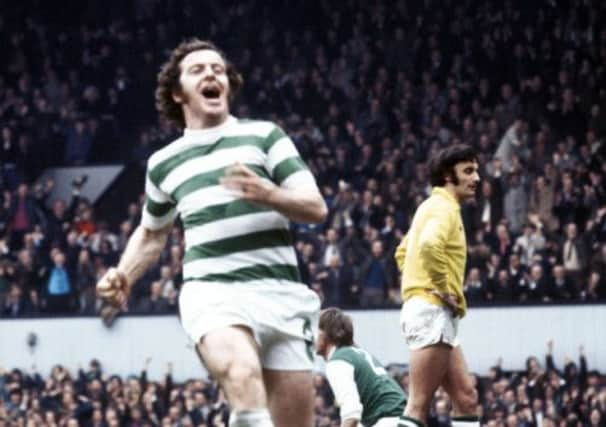Glenn Gibbons: Reasons to fear for both supporters


They should, however, draw at least mild encouragement from the realisation that their counterparts at Celtic share similar memories.
Of course, that is the point at which legitimate comparisons screech to a halt. By way of contrast, the 2013 renewal of the climactic match of the oldest trophy of all at Hampden tomorrow features the winning-most team in the history of the tournament and the winning-least of those generally acknowledged to have been the top five clubs – the Old Firm, the Edinburgh neighbours and Aberdeen –through 120 years of the professional game.
Advertisement
Hide AdAdvertisement
Hide AdBut the mere fact that supporters of both sides have access to reminders of the kind of results that may still induce a shudder decades after the event should be sufficient to infuse each with an appropriate ration of optimism and apprehension.
No Celtic follower who was in attendance at the great stadium in 1970, for example, can possibly have forgotten the earth-moving impact of the 3-1 defeat of their team by Aberdeen. Jock Stein’s marauding champions had, after all, just outplayed and beaten the reputedly invincible Leeds United at Elland Road to make themselves odds-on favourites to reach their second European Cup final.
They had also secured their fifth successive league championship five days before, while the League Cup had been captured earlier in the season. This meeting with the supposed lightweights from Pittodrie was the type of mismatch over which bookmakers, in order to attract any meaningful business, are forced to bet on the margin of victory.
Celtic proved to be so uninspired and bland that Eddie Turnbull’s Aberdeen side did not allow them to score until the 89th minute, by which time they themselves were 2-0 ahead. They even managed to deliver a third in the short time that remained.
A mere two years later, Turnbull would once again be threatening Celtic in the Scottish Cup final, this time in charge of his beloved Hibs, with whom he had achieved such a distinguished, 13-year playing career. The idea of a hoodoo hovering over the Easter Road side’s endeavours in the cup had taken root, and not only because 70 years had passed since their previous triumph.
There was, in addition to the simple fact of the seven-decade famine, the detail that even the most formidable Hibs team in history – indeed, the one that was indisputably among the most accomplished that had played anywhere – did not merely fail to win the trophy, but even to reach the final.
This improbable vacuum occurred during the years of the Famous Five, the frequently irresistible force who won three league championships between 1948 and 1952, and were runners-up on three other occasions, beaten on goal difference, by one point and by two points.
The reputation established by the brilliance of Smith, Johnstone, Reilly, Turnbull and Ormond was such that, when the European Cup was launched in 1955, it was Hibs, rather than champions Aberdeen, who were invited to represent Scotland.
Advertisement
Hide AdAdvertisement
Hide AdBefore the celebrated quintet became an item, Hibs contested the cup final in the first season after the second world war and made their own contribution to the momentum of the “curse” theory by taking the lead against Aberdeen in the first minute and still managing to lose 2-1.
It would be another 13 years before they would appear in the final, with Turnbull, by then a 35-year-old right-half, and Ormond the only survivors. But, with Joe Baker the new Lawrie Reilly, they were still short-priced favourites to lift the cup.
Then a mesmerised 13-year-old observer from the schoolboys’ enclosure at Hampden, this rapidly maturing columnist’s outstanding memory of the day (apart from John Coyle’s winning goal) was of Baker rising to a cross and scoring the “equaliser” by palming the ball over the line. By now, the hex was no longer just a fanciful excuse for regular under-achievement in the cup, but, to many, an unassailable fact.
But, by 1972, Turnbull was back as manager and in the process of creating what would become arguably the most talented team never to win a championship. Even the emergent XI who contested the cup final against Celtic contained six internationals, including the exceptional captain, Pat Stanton. By now five years into an apprenticeship which seems still to be ongoing, my participation in the build-up to the great occasion included features on some of the players and the understated, but solid conviction coming out of Edinburgh was unmistakable.
There was another omen to which supporters attached their hopes (no cup final would be complete without some statistical portent which reinforces faith) and which, in some cases, made Hibs, in certain minds, unopposable certainties.
It was that Celtic, since the very beginning of the Stein era, had won the cup in 1965, 67, 69 and 71, never once retaining the trophy. This theory, that the Parkhead side were doomed not to win back-to-back, gained almost as much currency as Hibs’ 70-year deprivation.
Given the pre-match debate, it is not difficult to imagine the effect on the Hibs supporters when Celtic won 6-1, a scoreline that featured a hat-trick from striker Dixie Deans. The shock would be the more stunning for the fact that five of the losers’ internationals – Jim Herriot, John Brownlie, Erich Schaedler, John Blackley and Stanton – were defenders.
Even on this blackest day, it is unlikely that any of the defeated leaving Hampden would have swallowed a prediction that, 41 years on, the old grail would still be giving Easter Road a body-swerve.